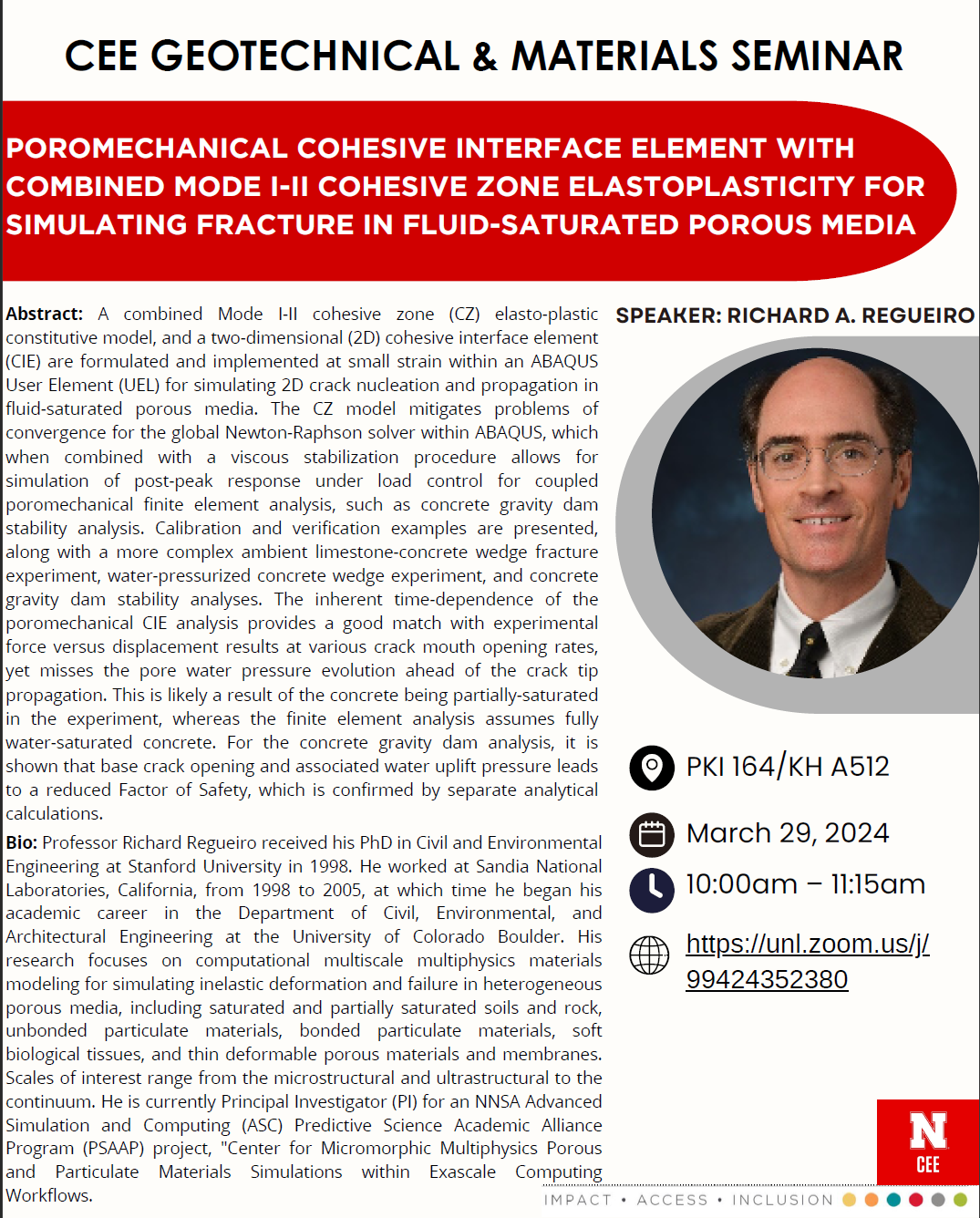
Who: Dr. Richard Regueiro, University of Colorado Boulder
When: Friday March 29 at 10:00AM
Where: PKI 164, KH A512, Zoom ID: 99424352380
Title: Poromechanical cohesive interface element with combined mode i-ii cohesive zone elastoplasticity for simulating fracture in fluid-saturated porous media
Abstract:
A combined Mode I-II cohesive zone (CZ) elasto-plastic constitutive model, and a two-dimensional (2D) cohesive interface element (CIE) are formulated and implemented at small strain within an ABAQUS User Element (UEL) for simulating 2D crack nucleation and propagation in fluid-saturated porous media. The CZ model mitigates problems of convergence for the global Newton-Raphson solver within ABAQUS, which when combined with a viscous stabilization procedure allows for simulation of post-peak response under load control for coupled poromechanical finite element analysis, such as concrete gravity dam stability analysis. Calibration and verification examples are presented, along with a more complex ambient limestone-concrete wedge fracture experiment, water-pressurized concrete wedge experiment, and concrete gravity dam stability analyses. The inherent time-dependence of the poromechanical CIE analysis provides a good match with experimental force versus displacement results at various crack mouth opening rates, yet misses the pore water pressure evolution ahead of the crack tip propagation. This is likely a result of the concrete being partially-saturated in the experiment, whereas the finite element analysis assumes fully water-saturated concrete. For the concrete gravity dam analysis, it is shown that base crack opening and associated water uplift pressure leads to a reduced Factor of Safety, which is confirmed by separate analytical calculations.
Bio:
Professor Richard Regueiro received his PhD in Civil and Environmental Engineering at Stanford University in 1998. He worked at Sandia National Laboratories, California, from 1998 to 2005, at which time he began his academic career in the Department of Civil, Environmental, and Architectural Engineering at the University of Colorado Boulder. His research focuses on computational multiscale multiphysics materials modeling for simulating inelastic deformation and failure in heterogeneous porous media, including saturated and partially saturated soils and rock, unbonded particulate materials, bonded particulate materials, soft biological tissues, and thin deformable porous materials and membranes. Scales of interest range from the microstructural and ultrastructural to the continuum. He is currently Principal Investigator (PI) for an NNSA Advanced Simulation and Computing (ASC) Predictive Science Academic Alliance Program (PSAAP) project, "Center for Micromorphic Multiphysics Porous and Particulate Materials Simulations within Exascale Computing Workflows.